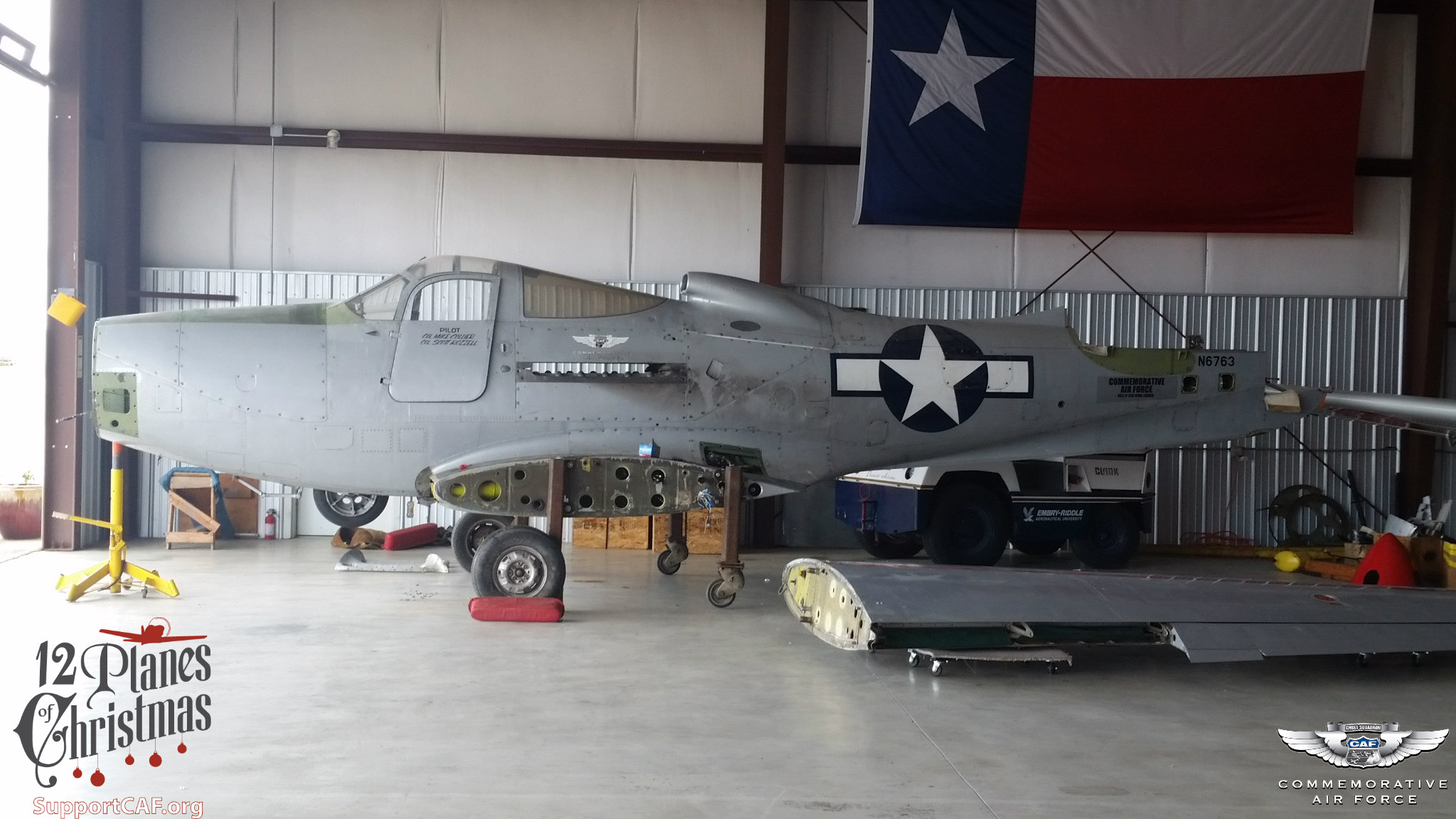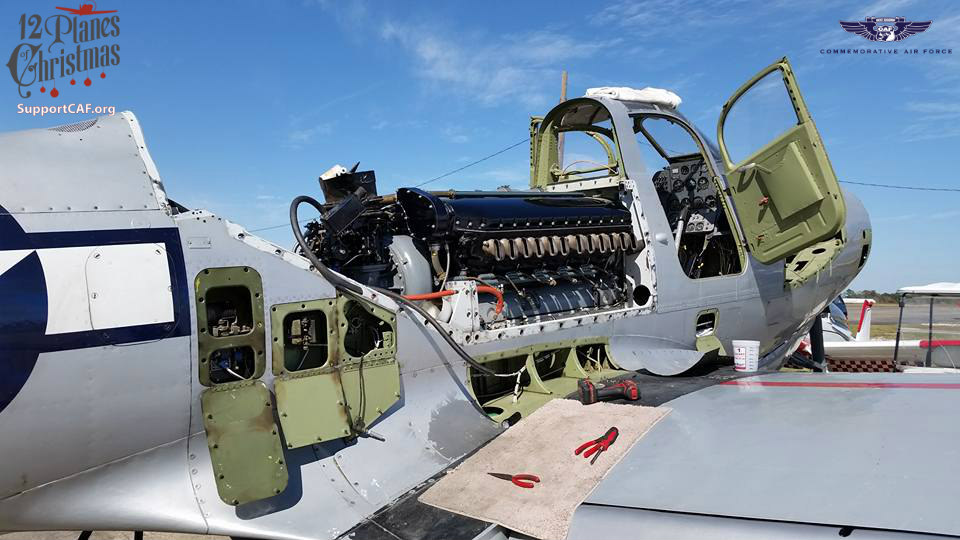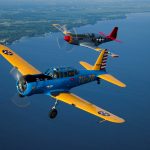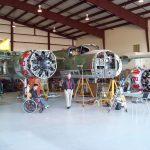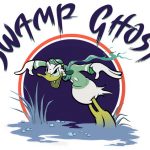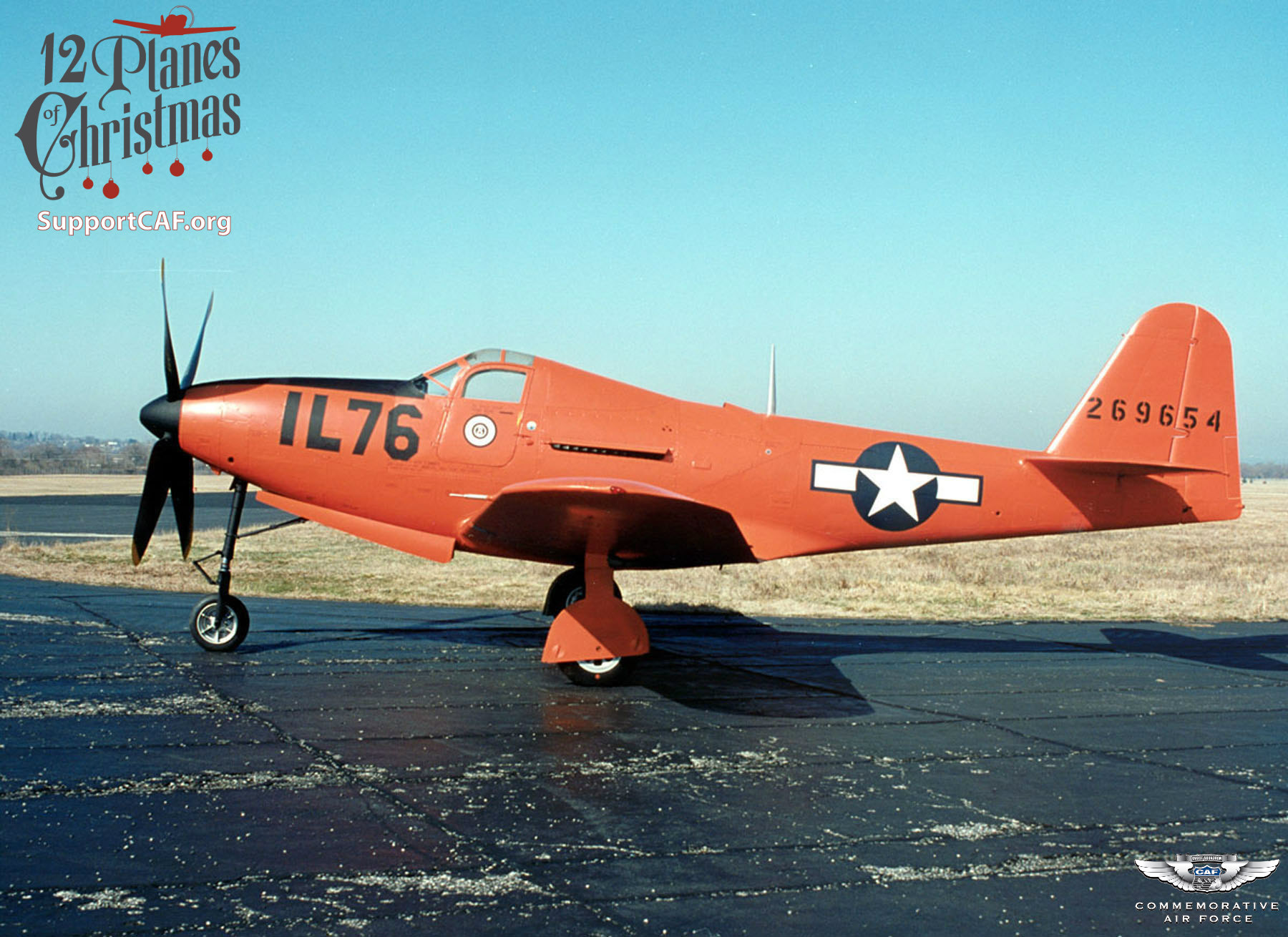
As part of WarbirdsNews support for the Commemorative Air Force’s fund-raising campaign ’12 Planes of Christmas’ we will be highlighting each of the aircraft on their list. The second of these is the CAF P-63F Kingcobra Sponsor Group’s Bell P-63F Kingcobra.
About This Aircraft
The CAF’s unique Bell P-63F Kingcobra fighter is returning to the skies to tell the fascinating, but little-known story of the “Flying Pinball Machine.” Because of its late development, the P-63 never flew in combat with U.S. forces overseas. However, in early 1945, a few hundred P-63s served Stateside in a secret program to train aerial gunners. Painted overall in a conspicuous reddish orange scheme and upgraded with inch-thick armored glazing and armor plates on the forward fuselage and wings, the re-designated RP-63s allowed trainee air gunners to fire special “frangible” bullets at an attacking aircraft in simulated aerial combat. The bullets were designed to break apart when they hit the ‘hardened’ RP-63, thus causing little or no damage, although that was not always the case. The scheme allowed for much more realistic combat simulation, with the fighters repeatedly diving down on the bomber with a dozen or so trainees inside taking turns shooting at them with live rounds. More than a hundred microphones were installed behind the special armor plates on the ‘Flying Pinball Machine’ Kingcobras, activating a counter in the cockpit and a red light in the RP-63’s spinner where the 37mm cannon used to be each time a frangible bullet hit the plane— hence the ‘Pinball’ nickname. This was by no means a risk-free mission for the RP-63 pilots. The leading edge oil cooler intakes were vulnerable to frangible bullets, and hits here could cause the engine to overheat and shut down; not an uncommon occurrence. The unarmored rear fuselage and empennage were also vulnerable to hits, and sometimes got holed as well. While the RP-63 Program was very successful in giving future air gunners real-world experience prior to entering combat, its overall impact on winning the war was somewhat limited due to its late employment. However, it was a highly innovative idea, and very much worthy of note.
Support This Aircraft
The airframe is complete, the Allison V-1710 engine has been test run, the propeller has been assembled, and the P-63 is on course to fly again in early 2016. All major components are in place with the exception of the gearbox, which requires a $25,000 rebuild. Once the gearbox receives its overhaul though, the airplane can return to the air in short order. But to tell the full story of the “Pinball” project, the airplane requires repainting, which is estimated to cost between $30,000 and $35,000. Once the aircraft is restored, it will fly at airshows across the country to educate younger generations about how Allied airmen prepared to go to war. The P-63 will also help us remember that more than 15,000 airmen and women lost their lives in training accidents in the continental U.S. during World War II. Click HERE to support this aircraft.
About This Unit
The CAF P-63F Kingcobra Sponsor Group was formed in the Spring of 2015, by CAF Cols.Mark Allen and Craig Hutain. The Airplane is presently under repair, with an estimated completion window of Spring 2016. When she’s back in the air, the group intends to base the aircraft in the Houston area. Please check the website periodically, for appearances near you!








